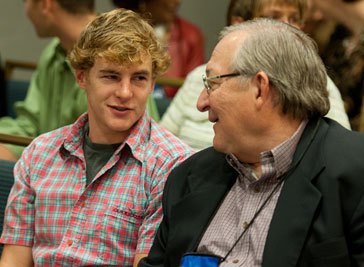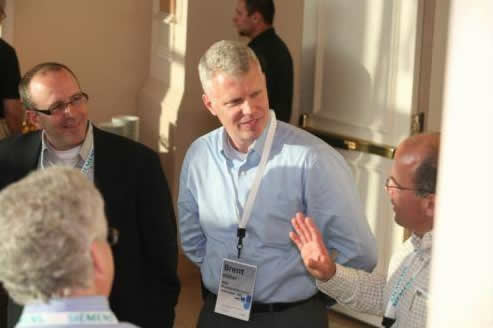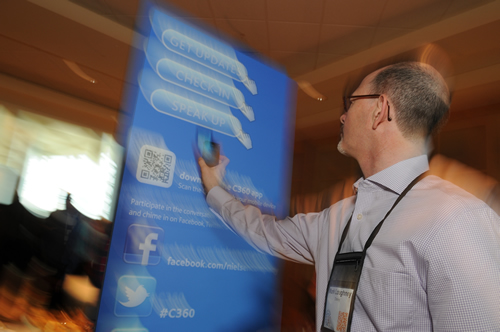How today’s meeting audiences are adapting, connecting
To commemorate a decade of planning and producing meetings for world-class organizations, I’ll use this newsletter to share some trends in our industry plus a few special client moments I’ve had over the years.

Effective meetings and events involves helping audiences relate to the current state of an organization and where it’s heading. We help do this by first understanding its business and cultural backdrop and who we’re trying to reach. This means getting to know people on a personal level as well as understanding their communication needs and preferences on a broader scale as audiences become more complex. I’ll briefly explore here how multi-generational audiences are using communication and technology to adapt and connect in business today.
Delivery Layers of Communication
One Way – E-mail remains versatile and universally-accessible to help us track and share information across a wide range of people and locations, and facilitate a sense of connectedness. Its use amplifies when layered with similar tools like Instant Messenger or texting for quick, easy communications.

Two Way – The digital age is creating effective two-way communication options: WebEx or Microsoft Live to facilitate online meetings complete with PowerPoint, polling and Q&A features; Skype so you can see the faces of other call participants; and virtual communities like LinkedIn that help us build our personal brands and connect more deeply around shared goals and interests. You might even think of these as communication tools “on steroids” based on how their features can combine for greater interaction and connectivity, with or without face-to-face events.

The Face-to-Face Way – Whether by themselves or combined with these tools, live meetings and events can build trust and deliver emotion like no other communication when they’re focused on a goal. If you want to:
- To find new customers…participate at a trade show or user conference to gain exposure for a product or service and put a “face to your organization’s name”.
- To improve cooperation and relationships between groups…invest in a structured event with select participants from these groups that initiates a better listening and brainstorming environment for them.
- To recognize top performers…host an annual awards event that not only helps these individuals’ success shine, but also becomes an organizational performance incentive toward future results.
Before We Meet: Starting the Learning Process Early
Technology is also helping us use meeting time more effectively because of how more quickly and flexibly we can connect with each other today. When we share event information with participants ahead of time, they can absorb it more gradually for a more thorough, meaningful onsite learning experience. It means we’re shifting our approach to meetings from The Axelrod Group’s connection before content to a more integrative Content–Context –Connect–Action approach. My The Art of Learning article explores the learning process further.

Balancing Face Time vs. Screen Time
Today’s technology explosion and many tools are also creating opportunities to enhance, not compete, with live events. The key is knowing what participants need to do, see, and feel, and then how these face time and screen time elements can best co-mingle. It’s also about knowing what your options and constraints are in event planning to help achieve that balance for the best results.
